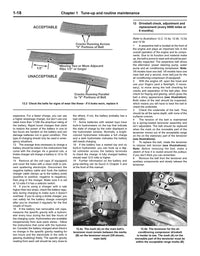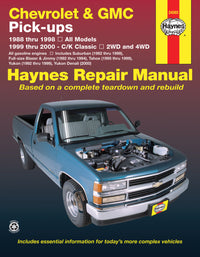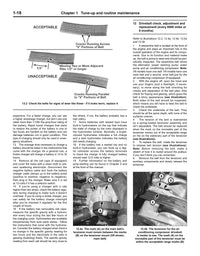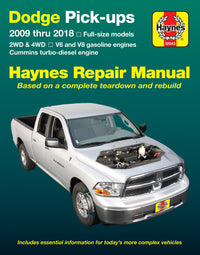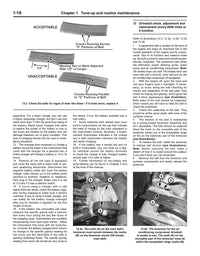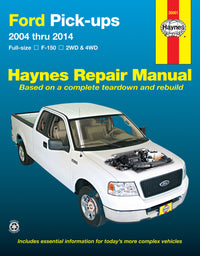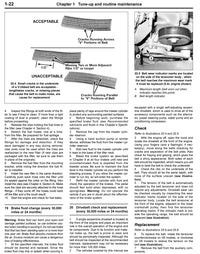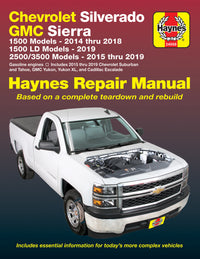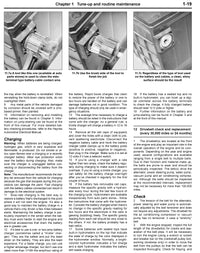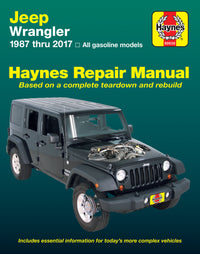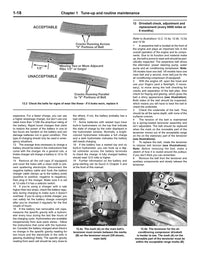Core Motorcycle Maintenance Skills for Independence & How to Build Them
| Level | Focus | Example Task | Build Confidence By... |
|---|---|---|---|
| Basic | Fluids, filters, torque specs | Oil change, air filter | Reading spec sheets, logging steps |
| Intermediate | Panel removal, valve checks, diagnostics | Valve cover removal, brake fluid bleed | Practicing with manual open next to bike |
| Advanced | System troubleshooting, major servicing | Valve adjustment, ABS fault diagnosis | Simulating scenarios,
using diagnostic tools |
1. Precision Torquing & Fastener Awareness
Skill Needed:
-
Understanding and applying correct torque specs using a torque wrench.
-
Identifying bolt types (e.g., aluminum vs. steel threads) and their torque tolerance.
Situations to Practice:
-
Reinstalling valve covers.
-
Changing oil drain plug or final drive bolts.
-
Installing crash bars or skid plates.
How to Build the Skill:
-
Start by practicing on non-critical bolts like luggage racks or footpegs.
-
Use a torque chart and your Haynes manual to compare different fastener values.
-
Mark fasteners with a paint pen after tightening—this builds visual memory and tracking.
2. Fluid Handling & System Bleeding
Skill Needed:
-
Managing closed fluid systems (oil, brake, clutch).
-
Avoiding contamination and air introduction.
Situations to Practice:
-
Oil changes with filter replacement.
-
Brake fluid bleeding every 2 years.
-
Topping up clutch fluid reservoir.
How to Build the Skill:
-
Start with engine oil service—low risk and highly visual.
-
Progress to rear brake fluid bleeding, which is more forgiving than front circuits.
-
Focus on cleanliness and technique—use gloves, rags, and torque to spec.
3. Clearance Measuring & Adjustment (Advanced)
Skill Needed:
-
Measuring valve clearances with feeler gauges.
-
Recording and interpreting tight/loose readings.
Situations to Practice:
-
12,000-mile valve service interval.
-
Ticking or rough idle noises that suggest improper clearance.
How to Build the Skill:
-
Use your Haynes manual illustrations to study the valve train layout.
-
Dry practice on a used cylinder head or with a mentor.
-
Record values and compare with the spec range—log and observe patterns.
4. Electrical Diagnosis & Code Interpretation
Skill Needed:
-
Reading fault codes.
-
Interpreting sensor failures and resets using a diagnostic tool.
Situations to Practice:
-
Warning lights after maintenance (e.g., oil service light, ABS fault).
-
Troubleshooting a non-start or accessory failure.
How to Build the Skill:
-
Use your diagnostic scanner to read fault history—even if the bike runs fine.
-
Simulate sensor disconnections (like unplugging TPS briefly) to understand fault behavior.
-
Learn to clear and recheck codes methodically after repairs.
5. Component Removal & Reinstallation
Skill Needed:
- Disassembling and reinstalling panels, tanks, seats, and covers without damaging clips or fasteners.
Situations to Practice:
- Accessing the air filter.
- Valve clearance inspection.
- Fuel tank removal for electrical routing or accessory install.
How to Build the Skill:
-
Review the Haynes panel removal sequence first.
-
Practice with non-cosmetic panels to build hand feel.
-
Keep a hardware sorting tray—label and group fasteners as you remove them.
6. System Inspection & Early Problem Recognition
Skill Needed:
-
Detecting unusual wear, fluid seepage, misalignment, or damage.
-
Using your senses: feel, smell, and sound.
Situations to Practice:
-
Final drive check before a long trip.
-
Daily pre-ride inspections.
-
Cleaning and inspecting wheel spokes and brake rotors.
How to Build the Skill:
-
Develop a routine walkaround: tires, fluids, cables, controls.
-
Use a flashlight and gloves—touch components for heat or looseness.
-
Record small issues and follow up—they teach you how failure develops over time.
7. Service Scheduling & Log-Keeping
Skill Needed:
-
Tracking mileage-based intervals and parts replaced.
- Forecasting service needs based on usage (city vs. ADV riding).
Situations to Practice:
-
Planning a 12k mile major service.
-
Mid-trip oil change or chain cleaning during ADV riding (if applicable).
How to Build the Skill:
-
Build a maintenance journal using Haynes’ logbook feature or a spreadsheet.
-
Set service alerts based on mileage and time (e.g., “Brake fluid: due Feb 2026”).
-
Save receipts and write notes on torque values or observations.
8. Tire Care & Pressure Discipline
Skill Needed:
-
Setting and maintaining correct pressures.
-
Identifying abnormal tread wear and interpreting handling changes.
Situations to Practice:
-
Weekly PSI checks.
-
After a cold night, before or after off-road riding.
How to Build the Skill:
-
Practice checking both cold and warm pressures—note the difference.
-
Check tread with a gauge and learn to read wear patterns (cupping, flattening).
-
Compare handling feel between 36/42 PSI and slightly off-target pressures.
9. Tool Use & Workshop Habits
Skill Needed:
-
Confident use of hand tools, torque wrenches, soft jaws, and bit drivers.
-
Clean and methodical workspace management.
Situations to Practice:
-
Oil change, final drive service, or crash bar install.
-
Valve cover removal or spark plug service.
How to Build the Skill:
-
Set up a small, organized tool tray for each job.
-
Lay out torque specs, fasteners, and diagrams beforehand.
-
Practice returning every tool to its place—minimizes errors and builds discipline.
10. Mental Model of the Motorcycle’s Systems
Skill Needed:
- Understanding how subsystems interact: fuel, spark, air, electronics, ABS, ESA.
Situations to Practice:
- Diagnosing a no-start, ABS fault, or erratic idle
- Performing a full 12k service with a checklist.
How to Build the Skill:
-
Read the Haynes section introductions before touching the bike.
-
Draw a simple flow diagram of how systems connect (air → spark → powertrain).
-
Revisit past maintenance entries to connect cause and effect.









